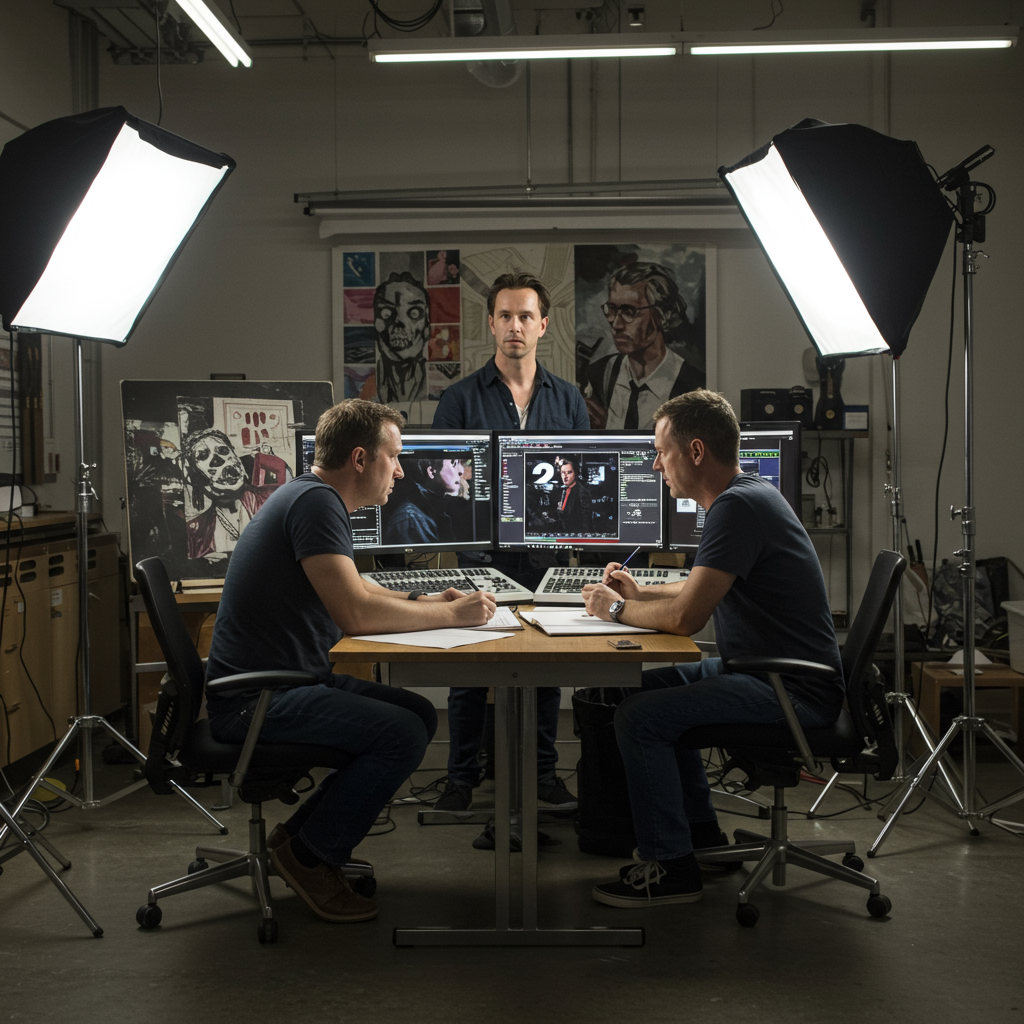The wait is over: “28 Years Later,” the highly anticipated new chapter in the groundbreaking zombie franchise, has arrived. Directed by the visionary Danny Boyle and written by Alex Garland – the creative duo behind the 2002 original – the film hits theaters on June 20, 2025, promising a return to the terrifying, visceral horror that redefined the genre.
Excitement has been building not only for the return of genuinely scary infected on the big screen but also for the promise of a fresh start for the series. While there was a previous sequel, “28 Weeks Later” (released in 2007 with Boyle and Garland as executive producers but different key creative talent), the new “28 Years Later” trilogy is being positioned as a direct continuation of the narrative from the original “28 Days Later,” intentionally setting aside plot points from the 2007 film to focus once more on the challenges faced within Britain.
A New Trilogy Begins
“28 Years Later” isn’t just a standalone sequel; it’s the first installment in a planned new trilogy. Garland has confirmed that a second film, titled “28 Years Later: The Bone Temple,” has already been shot back-to-back with the first movie. Directed by Nia DaCosta, this next chapter is expected to arrive in theaters on January 16, 2026. The script for the third film in the new trilogy is also written, though not the full screenplay yet. Original star Cillian Murphy is confirmed to return as Jim in “The Bone Temple” in a smaller capacity and is set for a very dominant role in the untitled fifth film (the third of the new trilogy).
According to Boyle, Garland pitched the first two films of this new trilogy as exploring distinct themes: the first being about “the nature of family,” and the second delving into “the nature of evil.”
Returning to a Ravaged Britain
Set nearly three decades after the initial Rage Virus outbreak, “28 Years Later” plunges audiences back into a Britain struggling to survive. The film centers on a family navigating this dangerous world, primarily focusing on 12-year-old Spike (Alfie Williams) and his father Jamie (Aaron Taylor-Johnson), a seasoned survivor and zombie hunter. They live on the isolated Lindisfarne island, which serves as a temporary sanctuary. A key part of the story involves Spike venturing to the mainland with his father for the first time, a terrifying coming-of-age experience. Jodie Comer also stars as Isla, Spike’s mother. Ralph Fiennes appears as Dr. Ian Kelson, a character who may play a significant role in future conflicts.
Visually, the film nods to the original’s gritty aesthetic (partially shot on camcorders) by utilizing modern high-end iPhones, creating a unique visual style while incorporating new techniques for action sequences.
Evolved Threats: Slow Lows and Alphas
After 28 years, the Rage Virus has not only persisted but evolved. Boyle explained the virus adapted to ensure its survival, “teaching” the infected to hunt more effectively rather than merely raging, which would burn them out. This evolution introduces terrifying new variants to the classic fast-moving infected the series is known for.
Slow Lows: These infected are found crawling on the ground, often feeding on insects. Described as bloated with pale, mottled skin, they are easier to evade at a distance but possess loud screams that can attract unwanted attention.
Alphas: Far more dangerous, Alphas are larger and immensely stronger than other infected. They exhibit significant brute force and surprising resistance to minor injuries, vulnerable mainly to powerful attacks like flaming javelins. Their existence poses a major new threat, forcing survivors to adopt different tactics during encounters.
The core Rage carriers are still present, sprinting relentlessly, but the introduction of these new types adds layers to the survival challenge.
The Enigmatic Jimmy
One of the most intriguing elements introduced in “28 Years Later” is the character of the adult Jimmy (Jack O’Connell). Hinted at in the film’s ending and set to be central to “The Bone Temple,” Jimmy is revealed to be a survivor of the initial 2002 outbreak. As a child, he witnessed horrific violence, including his mother’s attack and his father’s twisted reaction to the apocalypse.
Now an adult, Jimmy leads a dangerous cult on the mainland, identified by his followers’ matching blonde hair and Teletubby-colored tracksuits – seemingly a dark, traumatic recreation of his lost family. He is often seen wearing significant gold jewelry, including an inverted crucifix and a glittery tiara, presenting himself like a twisted king. Evidence of his influence is found across the mainland in carvings and graffiti. His traumatic past and present persona suggest he embodies the “nature of evil” theme intended for the second film, potentially clashing with characters like Dr. Kelson.
A Bold, Ambitious Return
Initial reactions suggest “28 Years Later” is a bold and ambitious film that pushes the franchise into new territory rather than being a simple retread. While still packed with gore and intense action, it is also described as thoughtful, contemplative, and at times, surprisingly dark or even bleak. The film aims to explore larger themes about survival, society, and the potential for darkness or even empathy amidst the horror. Its ending is noted as being deliberately open-ended, reflecting both the ongoing nature of the story and perhaps the frustrating realities of life in this post-apocalyptic world.
For those looking to revisit the origins or catch up before diving into the new trilogy, the original “28 Days Later” is currently available to stream on Pluto TV.
With its creative team reunited, new threats, a deeper look into the virus’s long-term impact, and a complex new antagonist, “28 Years Later” is poised to reignite the Rage in theaters and launch a compelling new era for the iconic horror franchise.

